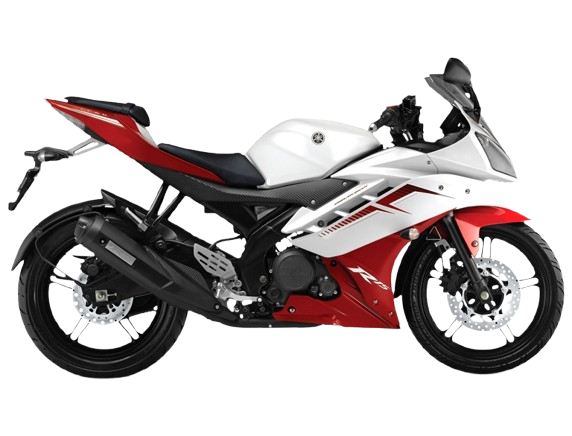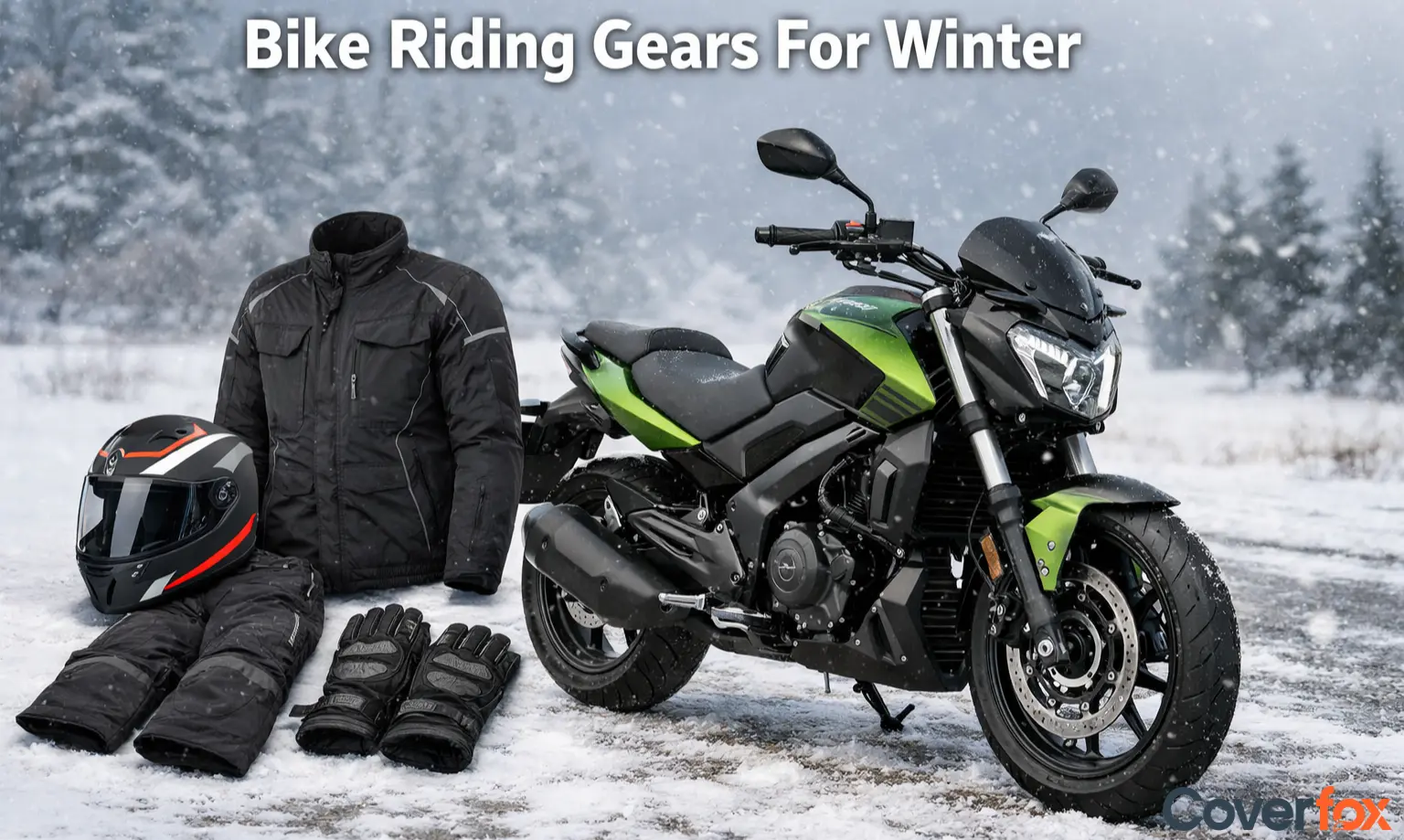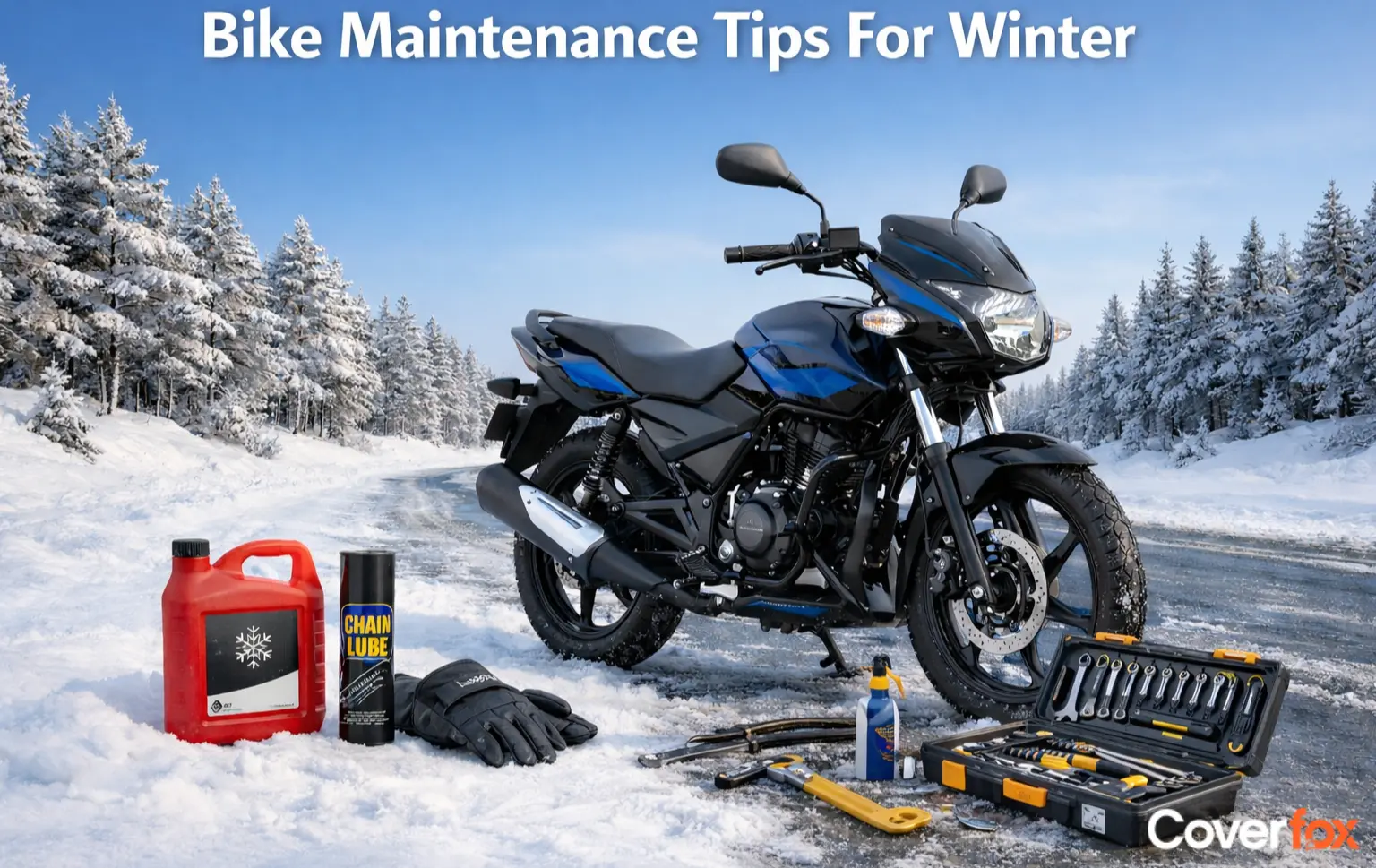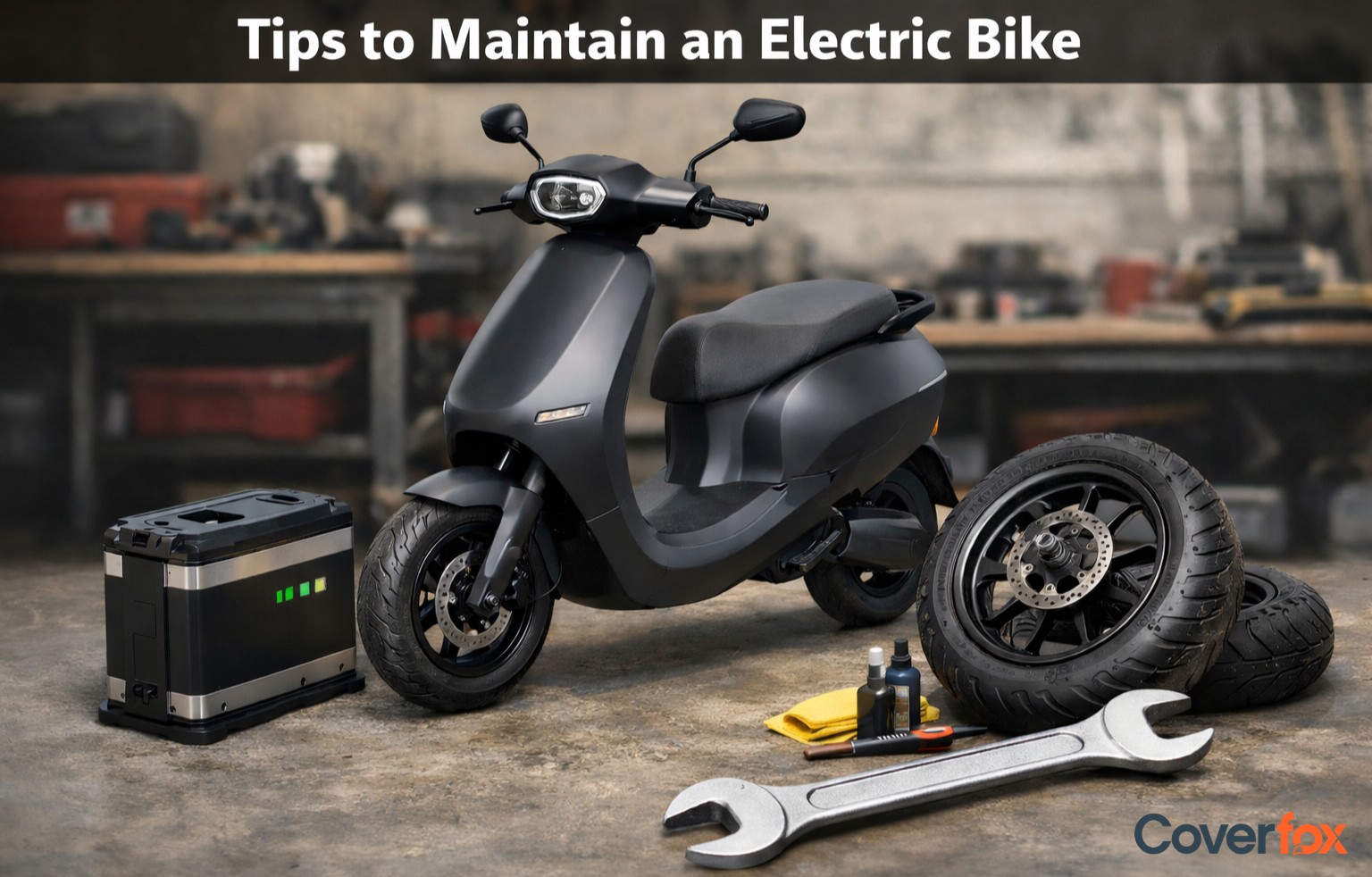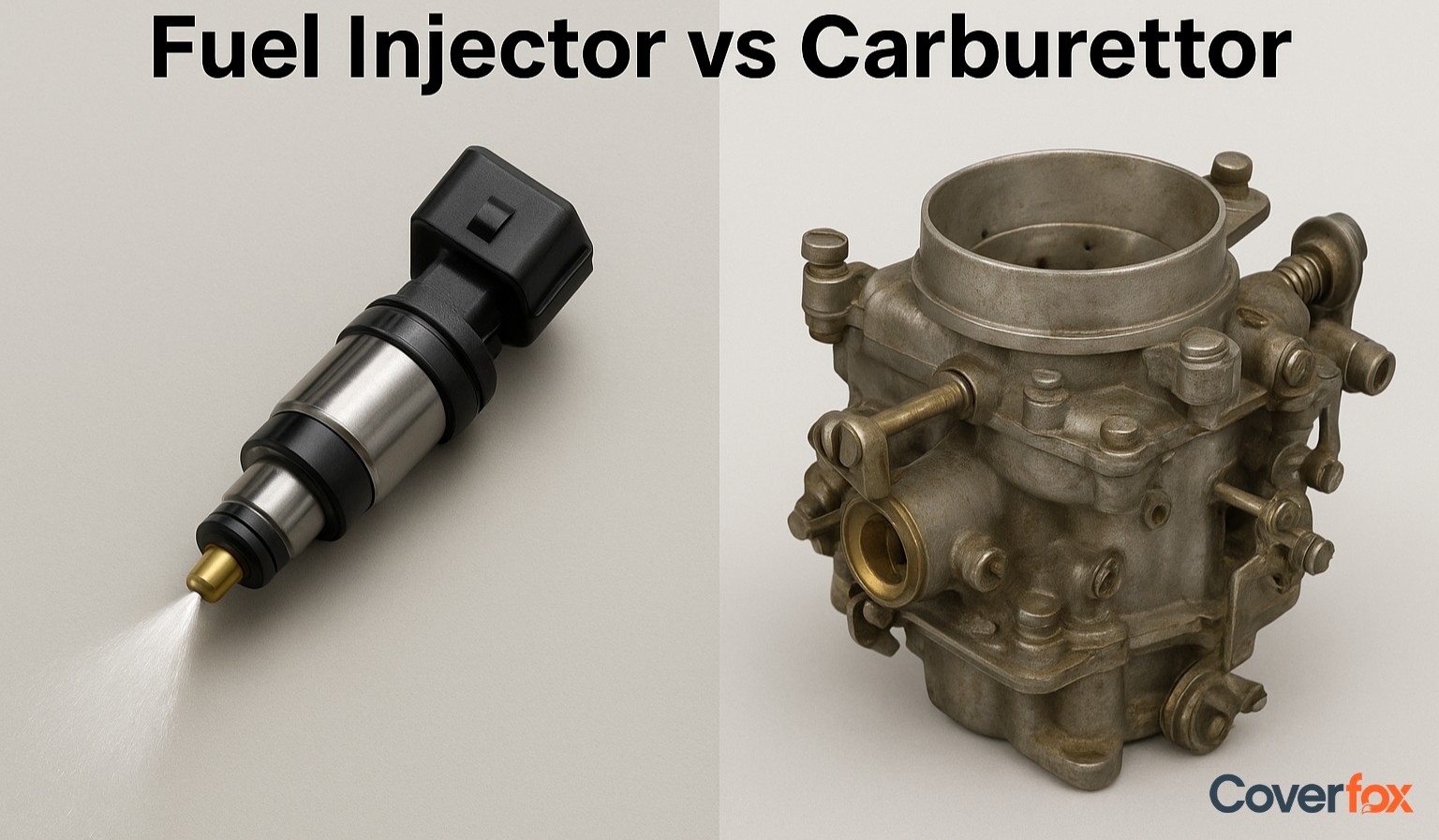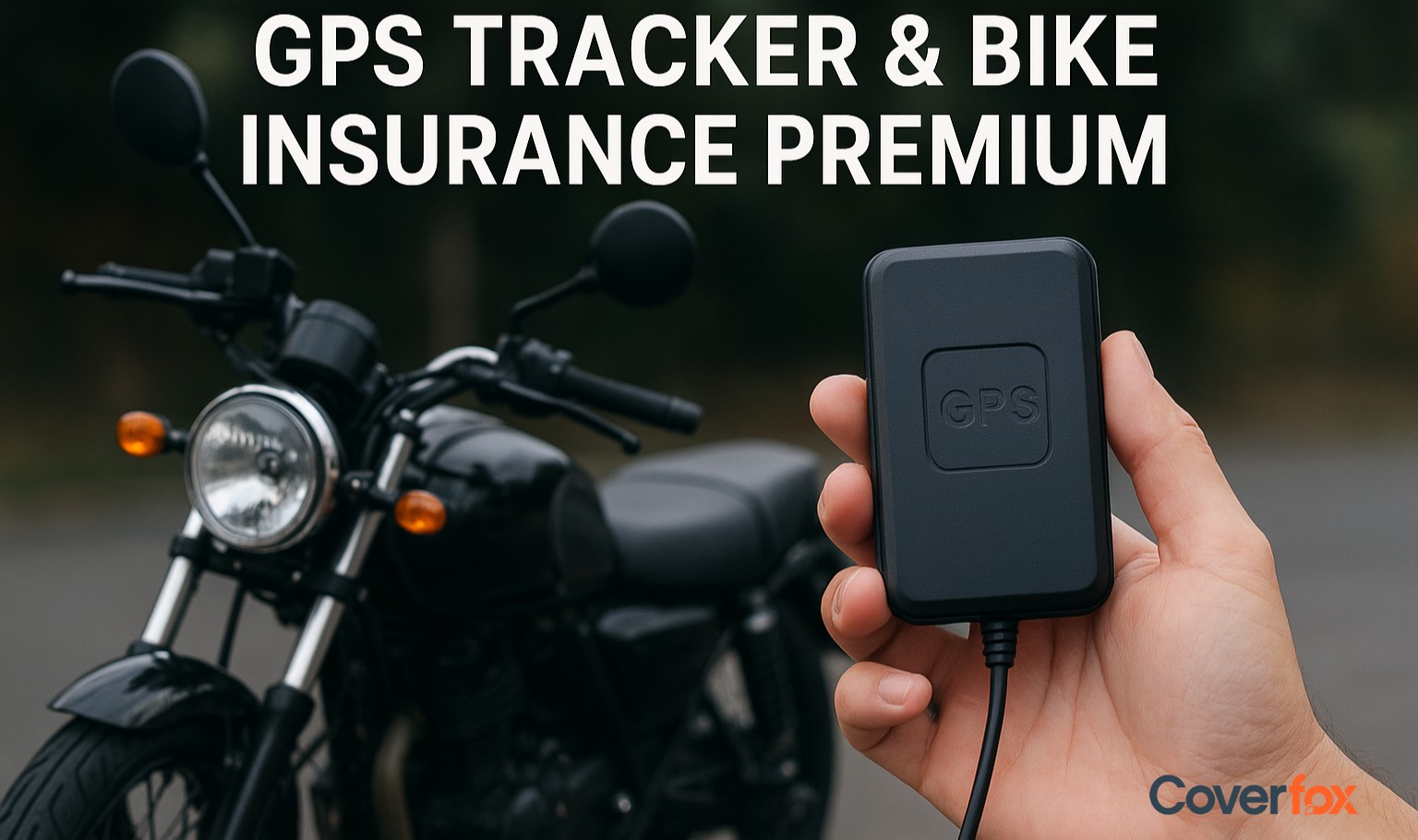While riding a bike, comfort is one of the key factors a rider seeks. Whether it's a long ride or a short ride, the rider’s posture, control and comfort matter.
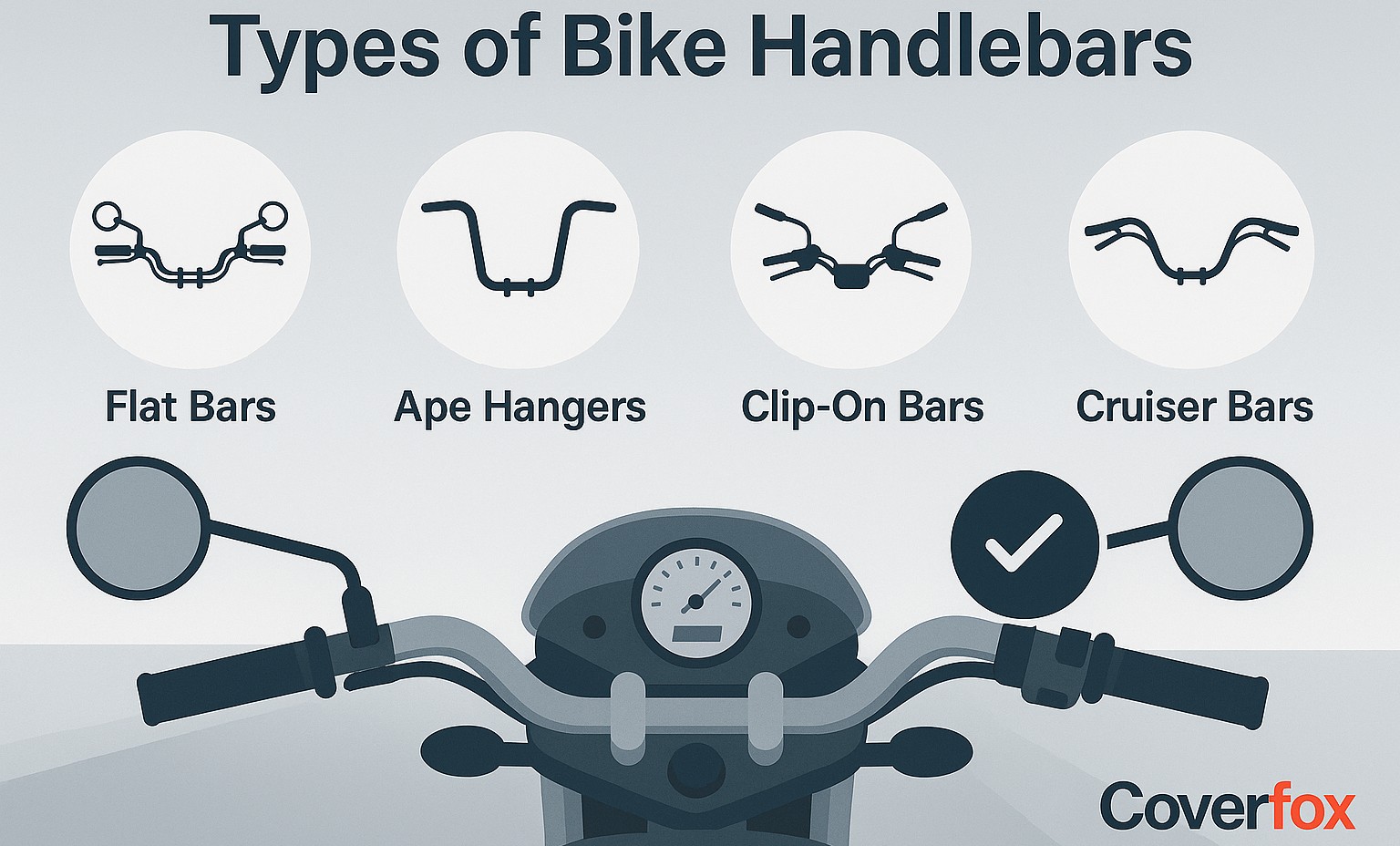
One of the factors that influences comfort while riding is the bike’s handlebars. Situated at the front of the bike, handlebars play a crucial role in comfort, control, speed, posture, and riding efficiency. There are several types of Bike Handlebars available in the market to choose from, but which handlebar is the best or suits you? To get that answer, stick till the end.
List of All the Types of Bike Handlebars
Here is a list of all the types of bike handlebars available in the market:
| Type of Bike Handlebar | Best For |
|---|---|
| Standard / Flat Bar | Commuters, Naked bikes, City riding |
| Clip-On Handlebars | Sport bikes, Track racing, Aerodynamic riding |
| Drag Bars | Cruisers, Custom builds, Straight-line performance |
| Ape Hangers | Choppers, Cruisers, Relaxed highway cruising |
| Z-Bars | Bobbers, Custom cruisers, Style and minimalism |
| Clubman Bars | Café racers, Vintage sport look |
| Cruiser Bars, Touring / Pullback Bars | Touring bikes, Comfortable upright posture, Long-distance touring, Rider comfort |
| Motocross / MX Bars | Dirt bikes, Off-road and trail riding |
| T-Bars | Custom cruisers, Strength and style |
| Tracker Bars | Flat track racing, Street trackers |
| Beach Bars | Retro cruisers, Relaxed coastal rides |
| Buckhorn Bars | Classic cruisers, Shorter riders, Upright posture |
Standard/Flat Handlebars
- Comfortable upright riding posture
- Easy to control, especially at low speeds
- Ideal for everyday use
- Limited aerodynamic advantage
- Not suitable for aggressive sport riding
Clip-on Handlebars
- Enhances aerodynamics and cornering control
- Sporty, aggressive look and feel
- Allows custom angle adjustment
- Uncomfortable for long rides
- Not ideal for city or daily commuting
Drag Bars
- Aggressive aesthetic appeal
- Improves straight-line speed control
- Works well for low-slung, powerful bikes
- Less comfortable over long distances
- Limited leverage for tight cornering
Ape Hanger Handlebars
- Iconic styling for cruiser enthusiasts
- Offers a relaxed arm position (at moderate height)
- Adds visual height and character to the bike
- Can cause fatigue and numbness on long rides
- Restricted manoeuvr ability at low speeds
- It may not be legal above certain heights in some regions
Z-Bars
- Unique aesthetic with moderate rise
- Comfortable for short to mid-range cruising
- Offers a blend of style and function
- Not ideal for high-speed performance
- Can interfere with instrument visibility on some bikes
Clubman Handlebars
- Perfect for retro or café racer styling
- Encourages an aerodynamic position
- Simple, minimalist design
- Puts strain on wrists and back over long distances
- Limited comfort for city riding
Cruiser / Touring / Pullback Handlebars
- Excellent for long-distance comfort
- Reduces fatigue in the shoulders and arms
- Great leverage for handling large bikes
- Less aggressive styling
- Not suited for quick or sharp handling
Motocross / MX Bars
- Durable and impact-resistant
- Provides excellent control on rough terrain
- Ergonomic for standing and seated off-road riding
- Too wide for dense urban traffic
- May not suit shorter riders
T-Bars
- Strong and vibration-resistant
- Clean, uncluttered cockpit
- Offers a confident, firm grip
- Limited adjustability due to one-piece construction
- May require cable/wire adjustments
Tracker Bars
- Offers both control and style
- Great for spirited street riding
- Maintains a comfortable posture
- Less suitable for highway cruising
- Limited rise may not appeal to taller riders
Beach Bars
- Relaxed, arms-out riding posture
- Enhances the laid-back cruiser look
- Comfortable at low speeds
- Not ideal for tight manoeuvring
- May reduce control at higher speeds
Buckhorn Handlebars
- Comfortable for short-to-medium rides
- Natural arm position reduces fatigue
- Classic styling with vintage appeal
- Limited control at high speeds
- Not ideal for aggressive or performance riding
- Can feel cramped for taller riders
The Standard or Flat Bar is the most common type of motorcycle handlebar. It is characterised by its straight and wide shape with minimal height or sweep. It provides a natural hand position, making it ideal for city riding and commuting.
Where Flat Handlebars are Used
Commuter bikes, standard motorcycles, and some entry-level cruisers.
Approximate Cost
₹800 – ₹2,000 (depending on quality and brand)
Pros
Cons
Clip-on handlebars are generally mounted directly onto the front fork tubes, offering a low and aggressive riding position. They're split into two pieces, allowing fine-tuned adjustments for racing or sport riding.
Where Clip-on Handlebars are Used
Sport bikes and racing motorcycles.
Approximate Cost
₹2,000 – ₹5,000
Pros
Cons
Drag bars are nearly straight handlebars with a slight pullback, giving the bike a sleek, muscular look. They place the rider in a forward-leaning position, mimicking the racing stance of drag motorcycles.
Where Drag Bars are Used
Drag bikes, cruisers, and custom street builds.
Approximate Cost
₹1,000 – ₹3,000
Pros
Cons
Ape hangers are tall handlebars that rise significantly above the mounting point, requiring the rider to reach up to hold them. They show a distinctive chopper look and a unique cruising experience.
Where Ape Hanger Handlebars are Used
Choppers and classic cruiser motorcycles.
Approximate Cost
₹2,500 – ₹8,000
Pros
Cons
Z-Bars have a zig-zag design in the centre, creating a bold, angular look. They add character and height to the motorcycle without the dramatic rise of ape hangers.
Where Z-Bars are Used
Bobbers and custom cruisers.
Approximate Cost
₹1,800 – ₹4,000
Pros
Cons
Clubman bars are angled downward and backwards in a sweeping motion, showcasing a vintage cafe racer vibe. They replicate a tucked-in racing posture for a streamlined profile.
Where Clubman Handlebars are Used
Café racers and vintage sport bike builds.
Approximate Cost
₹1,500 – ₹3,500
Pros
Cons
These handlebars are wide with a noticeable pullback, designed to offer maximum comfort for long rides. They allow the rider to sit in a relaxed, upright posture.
Where Pullback Handlebars are Used
Touring bikes and large cruiser motorcycles.
Approximate Cost
₹2,000 – ₹6,000
Pros
Cons
Motocross handlebars are strong, wide, and straight, designed to absorb shocks and provide maximum control during off-road riding. They often come with a cross brace for added rigidity.
Where Motocross / MX Bars are Used
Dirt bikes, dual-sport, and supermoto motorcycles.
Approximate Cost
₹1,200 – ₹3,500
Pros
Cons
T-Bars combine the riser and handlebar into one piece shaped like the letter "T". They are clean, minimal, and sturdy, which is ideal for heavy cruisers.
Where T-Bars are Used
Custom Harley-Davidsons and heavy cruiser motorcycles.
Approximate Cost
₹3,000 – ₹8,000
Pros
Cons
Tracker bars are low-rise handlebars that are inspired by flat-track racing. They provide wide leverage and a slightly forward-leaning stance, ideal for spirited urban or track riding.
Where Tracker Bars are Used
Street trackers, scramblers, and some naked bikes.
Approximate Cost
₹1,500 – ₹3,000
Pros
Cons
Beach bars are wide and sweeping, often curving back toward the rider. These are all about relaxed cruising and classic beach cruiser aesthetics.
Where Beach Bars are Used
Large cruisers and custom beach-themed builds.
Approximate Cost
₹2,500 – ₹6,000
Pros
Cons
Buckhorn handlebars stand out for their upward and inward sweep that resembles the horns of a buck (deer), hence the name. They are positioned closer to the rider, allowing a relaxed arm position without needing to lean forward. These bars are typically narrower than ape hangers but still provide a distinct cruiser vibe.
Where Buckhorn Handlebars are Used
Classic cruisers, bobbers, and older Harley-Davidsons.
Approximate Cost
₹2,000 – ₹4,500
Pros
Cons
How to Choose the Right Handlebars for Your Bike
The right type of handlebar is essential for comfort, speed, and control over the bike. Here’s the best way to choose the right handlebars for your bike:
Different riding styles require different handlebars
Check your ergonomics
Evaluate bike compatibility
Keep legal limits in mind
Factor in budget and materials
Whether you ride for daily commuting, long-distance touring, off-roading, racing, or cruising for style, each demands a specific type of handlebar. Examples include city riding, highway cruising, motocross, café racing, and custom shows.
Consider your arm length, torso height, and shoulder width, as they factor into the total comfort while riding. The handlebar should let you ride comfortably without straining your wrists, shoulders, or back.
Not all handlebars fit all bikes. Make sure the handlebar suits your bike’s stem clamp size, has proper mounting points for levers and switches, and doesn't require excessive cable modifications.
Especially in India, handlebars like ape hangers must comply with RTO regulations, generally not rising more than 15 inches above the seat.
Handlebars vary in cost depending on material and design. Steel is strong and budget-friendly, while aluminium is lighter but usually pricier.
Key Takeaways
While there are several types of handlebars on the market, you have to choose what best suits your needs and is compatible with your bike. Consider your riding style, your bike make and model, and your budget before choosing a handlebar. As structuring a two wheeler insurance policy is important to maintain a premium-coverage balance, selecting the right type of handlebars is also important for a bike to maintain the balance between comfort, control and speed. Ride safely, ride comfortably.
Also Read:
Frequently Asked Questions
Which handlebar is best for long-distance touring?
Touring or pullback handlebars are ideal for long-distance rides.
Are drop bars or flat bars better for beginners?
Flat bars (or standard handlebars) are better for beginners as they provide a natural hand position and better visibility, making them easier to control.
What handlebars are most comfortable?
Cruiser, beach, and pullback handlebars are among the most comfortable ones.
Can I switch my handlebar type?
Yes, but compatibility with your bike’s mounting points, control cables, and riding posture must be checked before making the change.
What is the most versatile type of bike handlebar?
Standard or flat handlebars are considered the most versatile—they suit daily commuting, light touring, and even some custom builds.
Are wider handlebars better for control?
Wider handlebars generally offer more leverage and control, especially at low speeds or in off-road conditions, but they may reduce manoeuvr ability in tight spaces.
Do handlebars affect back or wrist pain?
Yes, the wrong handlebar height or angle can cause discomfort or pain in the back, wrists, or shoulders. Ergonomically suitable bars can reduce such issues.
